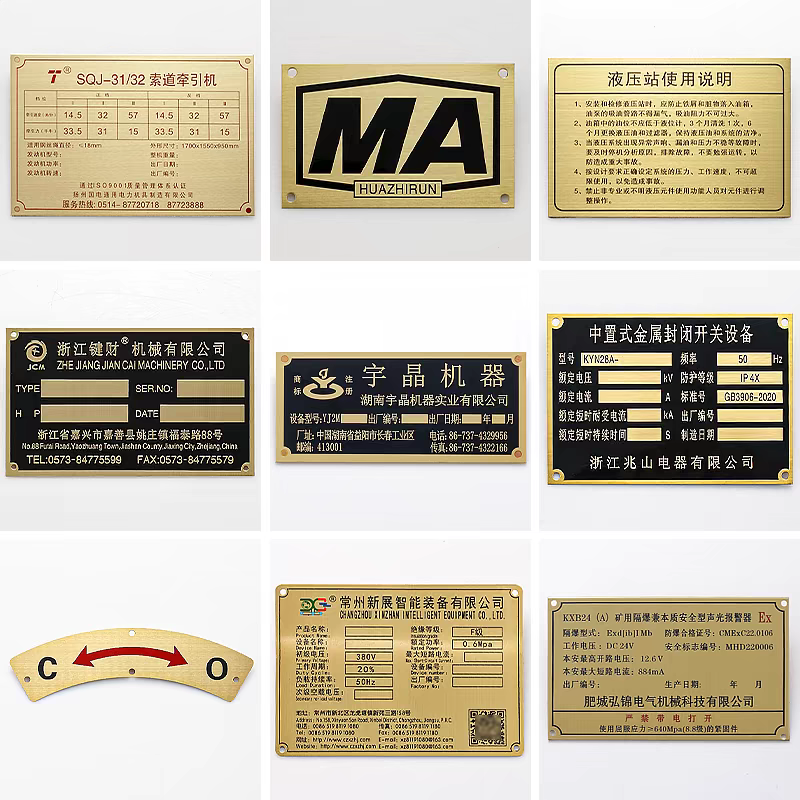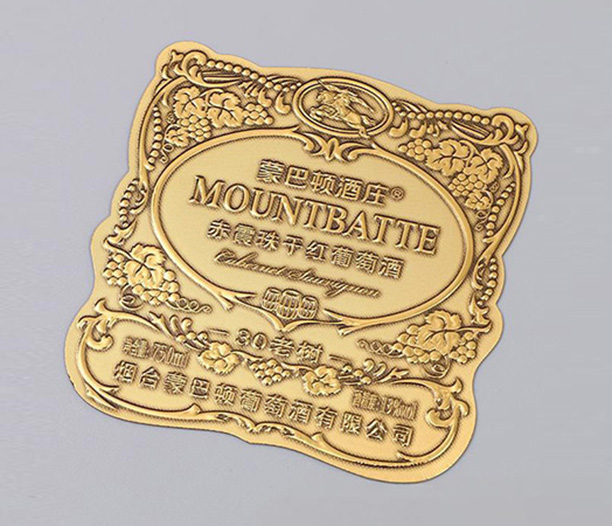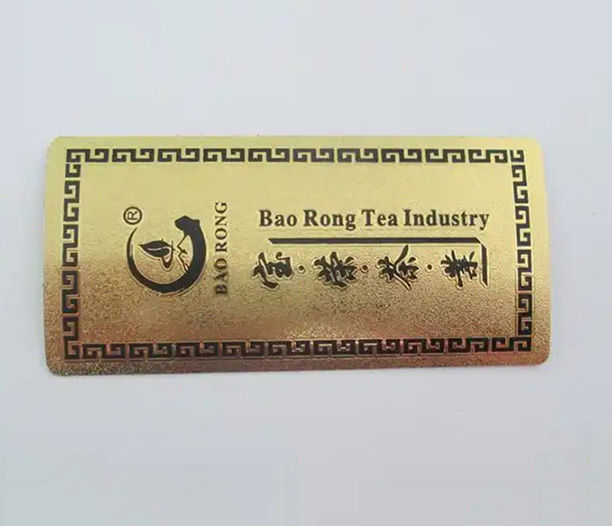When I first considered upgrading my office desk, I knew I wanted something that screamed professionalism but also had a personal touch. After browsing through countless options, I stumbled upon the idea of a custom metal name plate. It wasn't just about having my name on display; it was about durability, style, and that unmistakable feel of quality. If you're in a similar boat—whether for your home office, a corporate setting, or even as a gift—you've probably wondered how to navigate the world of custom metal name plates without getting lost in jargon or overspending. In this article, I'll break down the process into five straightforward steps, drawing from my own experiences and research. We'll cover everything from material choices to cost tips, so you can create a custom metal name plate that fits your vision and budget.
A custom metal name plate isn't just a label; it's a statement piece. Think about it: metal offers a timeless appeal that plastic or wood can't match. It resists wear and tear, looks sleek in any environment, and can be tailored to reflect your personality or brand identity. But where do you start? With so many options out there, it's easy to feel overwhelmed. That's why I've distilled it into a simple, actionable guide. By the end, you'll know exactly how to bring your ideal custom metal name plate to life, whether you're handling it yourself or working with a supplier.

Why Opt for a Custom Metal Name Plate?
Before diving into the steps, let's talk about why a custom metal name plate might be the right choice for you. Metal name plates are incredibly versatile. They're used in offices, on desks, doors, machinery, and even as decorative items in homes. Unlike off-the-shelf options, a custom metal name plate allows you to control every detail—from the font and size to the finish and mounting method. This personalization ensures it aligns perfectly with your aesthetic or functional needs.
Durability is another big plus. Metals like aluminum, brass, or stainless steel can withstand daily handling, temperature changes, and moisture, making them ideal for high-traffic areas. Plus, they often come with engraving or etching that won't fade over time. I've seen how a well-made custom metal name plate can elevate a space, adding a touch of elegance without being overly flashy. It's a small investment that pays off in longevity and impact.
Step 1: Define Your Purpose and Design Vision
The first step in creating a custom metal name plate is to clarify why you need it and what you want it to look like. Are you using it for professional identification, like on a desk or door? Or is it more for personal use, such as a gift or home decor? Your purpose will influence the design elements, like size, shape, and text.
Start by sketching out your ideas or gathering inspiration online. Consider the overall style: do you prefer a modern, minimalist look with clean lines, or something more ornate with intricate patterns? For a custom metal name plate, think about the text—your name, title, or a motto—and how it will be displayed. Font choice matters a lot here; sans-serif fonts often give a contemporary vibe, while serif fonts feel classic and formal.
Also, decide on the dimensions. A typical desk custom metal name plate might be around 4x6 inches, but it can vary based on your space. Don't forget about color; while metal naturally has a silver or gold tone, you can add finishes like powder coating for a pop of color. This stage is all about dreaming big—later, we'll refine it based on practical constraints.
Step 2: Select the Right Metal Material
Choosing the metal for your custom metal name plate is crucial because it affects everything from appearance to cost and durability. Common options include aluminum, stainless steel, brass, and bronze. Each has its pros and cons, so let's break them down.
Aluminum is lightweight, corrosion-resistant, and affordable, making it a popular choice for indoor use. It's easy to engrave and can be anodized for added color protection. Stainless steel, on the other hand, is heavier and extremely durable, ideal for outdoor or industrial settings where weather resistance is key. Brass offers a warm, golden hue that ages beautifully over time, giving a vintage feel, while bronze is even more robust and often used for high-end applications.
When I was selecting material for my own custom metal name plate, I considered where it would be placed. For a desk indoors, aluminum worked perfectly—it was cost-effective and looked professional. But if you're placing it in a humid environment, stainless steel might be worth the extra investment. Always ask suppliers about the metal's thickness (gauge) too; thicker plates feel more substantial but can be pricier.
Step 3: Choose the Engraving or Etching Method
Once you've settled on the metal, it's time to think about how your design will be applied. Engraving and etching are the most common methods for a custom metal name plate, each offering distinct results. Engraving involves cutting into the metal with a tool or laser, creating deep, permanent marks that are tactile and visually striking. It's great for text and logos that need to stand out. Etching, often done chemically or with lasers, produces a smoother, more subtle design by eating away at the surface. It's perfect for detailed graphics or finer lines.
Laser engraving is a popular choice for custom metal name plates because it's precise and efficient. I've found that it allows for complex designs without compromising quality. If you're going for a rustic look, you might consider hand-engraving, though it can be more time-consuming and costly. Another option is embossing, where the design is raised from the surface, adding a 3D effect. Whichever method you choose, ensure it complements your overall vision. Most suppliers provide samples, so don't hesitate to request them—it helped me visualize the final product before committing.

Step 4: Consider Finishing and Protection Options
Finishes not only enhance the look of your custom metal name plate but also protect it from damage. Common finishes include polishing for a shiny surface, brushing for a matte look, or coating with materials like powder or epoxy for added durability and color. For instance, a clear coat can prevent tarnishing on brass or bronze, while a colored powder coat can match your brand's palette.
Think about the environment where the name plate will be used. If it's outdoors, opt for weather-resistant finishes that guard against UV rays and moisture. Indoors, you might prioritize aesthetics—like a satin finish for a soft glow. I made the mistake of skipping this step once and ended up with a custom metal name plate that scratched easily. Learn from my experience: discuss finish options with your supplier and consider factors like abrasion resistance and ease of cleaning. This small addition can extend the life of your name plate significantly.
Step 5: Find a Reliable Supplier or Explore DIY Routes
The final step is sourcing your custom metal name plate. You can either work with a professional supplier or tackle it as a DIY project, depending on your skills and budget. For most people, a supplier is the way to go—they have the equipment and expertise to deliver a high-quality product. Look for companies that specialize in custom metal name plates; check reviews, request quotes, and ask about turnaround times. I always recommend getting multiple quotes to compare prices and services. Some suppliers offer online design tools, making it easy to upload your artwork and see a preview.
If you're feeling adventurous, a DIY custom metal name plate is possible with basic tools like metal sheets, engravers, and safety gear. However, it requires patience and practice—I tried it once and learned that metalworking isn't as simple as it looks! For beginners, starting with a small project or using kits can be a fun way to dip your toes in. Either way, ensure you have clear communication about your design specs to avoid misunderstandings.
Cost Analysis: What to Expect for a Custom Metal Name Plate
Let's talk numbers. The cost of a custom metal name plate can vary widely based on factors like size, material, complexity, and quantity. On average, a simple aluminum name plate might cost $15-$30, while a detailed stainless steel piece could run $50-$100 or more. Engraving methods also affect price; laser work is generally more affordable for bulk orders, while hand-engraving adds a premium.
To save money, consider ordering in bulk if you need multiple plates—many suppliers offer discounts. Also, simplify your design; intricate graphics or multiple colors can increase costs. When I budgeted for my custom metal name plate, I factored in shipping and any additional fees for revisions. Remember, investing in quality now can save you from replacements down the line. It's all about balancing your desires with what you're willing to spend.
Common Applications and Creative Ideas
A custom metal name plate isn't limited to desks—it's versatile enough for various uses. In offices, it can label doors or workspaces, adding a professional touch. At home, it might serve as a personalized house number or a decorative piece in a study. I've even seen them used on gifts, like retirement plaques or awards, where the metal's elegance makes the moment special.
Get creative with your design! Incorporate logos, symbols, or even QR codes that link to your portfolio. For a unique twist, mix metals or add backlighting for visibility in dim areas. The key is to make your custom metal name plate reflect who you are or what your brand represents. Don't be afraid to think outside the box—it's your chance to make something truly one-of-a-kind.
Tips for Maintenance and Longevity
To keep your custom metal name plate looking new, regular maintenance is essential. For most metals, a soft cloth and mild soapy water will remove dust and fingerprints. Avoid harsh chemicals that could damage the finish. If you have an outdoor plate, inspect it periodically for signs of corrosion and reapply protective coatings if needed.
Storage matters too—when not in use, keep it in a dry place to prevent moisture buildup. From my experience, a little care goes a long way; my first custom metal name plate still looks pristine years later because I wiped it down occasionally. By following these tips, you'll ensure your investment remains a standout feature for years to come.
Frequently Asked Questions About Custom Metal Name Plates
Here are some common questions I've encountered, along with answers to help you on your journey.
Q1: What is the typical turnaround time for ordering a custom metal name plate?
A1: It usually takes 1-3 weeks, depending on the supplier and design complexity. Rush orders might be available for an extra fee.
Q2: Can I include a logo or graphic on my custom metal name plate?
A2: Absolutely! Most suppliers accept digital files for logos and graphics, which can be engraved or etched onto the metal.
Q3: How do I clean and maintain a custom metal name plate?
A3: Use a soft, damp cloth with mild detergent for routine cleaning. Avoid abrasive materials to prevent scratching the surface.
Q4: Are there eco-friendly options for custom metal name plates?
A4: Yes, many suppliers use recycled metals and environmentally friendly processes. Ask about their sustainability practices when ordering.
Q5: What if I need to make changes to my design after placing an order?
A5: Contact the supplier immediately; changes might be possible before production starts, but could incur additional costs or delays.
In wrapping up, creating a custom metal name plate is a rewarding process that blends creativity with practicality. By following these five steps—defining your purpose, selecting materials, choosing engraving methods, considering finishes, and finding the right supplier—you'll end up with a piece that's both functional and beautiful. Remember, the goal is to make it uniquely yours, so take your time and enjoy the journey. If you have more questions, don't hesitate to reach out to experts or share your experiences in the comments. Happy designing!






